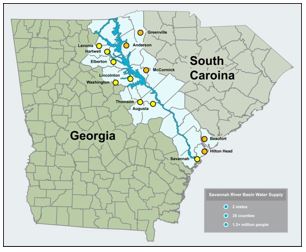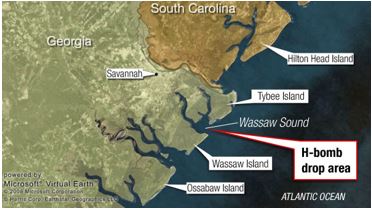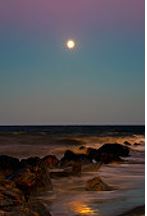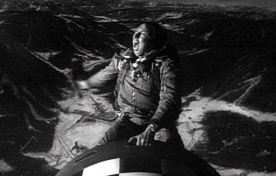Yahoo! – Marlow’s Coastal Empire
Flying from Atlanta to Savannah affords the sharp eyed airline passenger with a unique view of one of Georgia’s major rivers. This river ends at the city that took its name.
Recent research says that the river’s and city’s name came from a group of Shawnee who migrated to the Georgia Piedmont region in the 1680s. These Shawnee were called by several variant names that all derive from their native name, Ša·wano·k, literally, “southerners.” The local variants included Shawano, Savano, Savana, and Savannah.
On a map the Savannah river resembles an immensely lengthy yet thin Water Moccasin uncoiled, with its head in the Savannah/Tybee Island delta and estuary, and its body at rest curving afar over the interior of the coastal empire country.

As it flows through the Savannah city center, the river narrows to several hundred yards in width. At over 300 miles long and draining a basin of almost 11,000 square miles, the river’s narrowness only a few miles from the Atlantic Ocean is oddly striking.
Is this narrowness due to low water flow? Not really likely in a region that sees between 40 to 50 inches of annual rainfall. US Army Corps of Engineers improvements? Probably. But, this portion of the river is tidal and there are three dams along its upriver length for flood control and power generation. All these elements conspire to even out this life giving Savannah waterway’s flow over time.
Regardless, the city and its residents dwell squarely in the snake’s throat and behind its fangs. Is this snake poisonous or nonpoisonous, one wonders? Perhaps it depends on the time of day or where exactly one is located inside its mouth.
Amazingly, one place of possible existential danger is Tybee Island’s offshore waters of Wassaw Sound. The menace comes in the form of a real life time capsule from the Cold War. No, your scribe is not being satirical or snarky here.
Almost 60 years ago after a B-47/F-86 midair collision, the USAF lost one of their largest and oldest hydrogen bombs in 15 to 20 feet deep offshore water. This MK-15 1.7 to 3.8 megaton yield thermonuclear device is still missing.

The last official statement by the US government regarding this lost-and-not-yet-found item, its status and threat to humanity was in a 2001 report on the 1958 search and failed recovery of the bomb. The Air Force said that if the bomb is still intact, the risk associated with the spread of heavy metals is low (Eh? Say again?). If the bomb is left undisturbed, the explosive in the bomb poses no hazard, the report said (how about the MK-15’s warhead of several hundred pounds of highly enriched uranium?). The report goes on to say that an “intact explosive” would pose a serious explosion hazard to personnel and the environment if disturbed by a recovery attempt (well, duh!). In other words, leave it alone.

MK-15 hydrogen bomb (l); 1954 MK-15 Zombie prototype Castle Romeo test in Bikini Atoll (r)
In a 1958 report to the Congress, the Defense Department said that all dredging operations or seabed net fishing in the lost-bomb drop area should be carefully monitored.
Thus assured, Marlow and W learned to stop worrying and love this bomb.
Then just two week ago Marlow and W observed ongoing dredging operations a few miles north of the guesstimated MK-15 drop site. They saw zip point zilch monitoring as the near derelict dredge barge beavered away on the Savannah River’s alluvial silt deposits.

Moonrise from Tybee Island
As that evening’s newly arisen full-moon beams illuminated Tybee Island’s pristine beach and waters with a fiery orange-red glow, they exclaimed a whispered homage to Slim Pickens – Yahoo!

Major “King” Kong riding a nuclear bomb like a bucking bronco, while shouting Yahoo!
and smacking it with his cowboy hat until it explodes in a massive mushroom cloud
(Courtesy – Dr. Strangelove or: How I Learned to Stop Worrying and Love the Bomb (1963))
Copyright © 2016 From My Isle Seat
